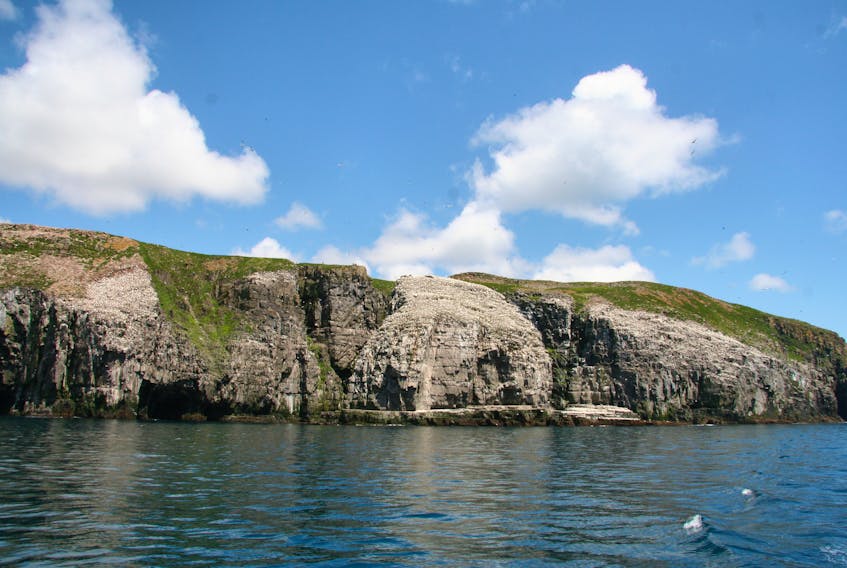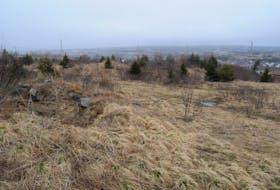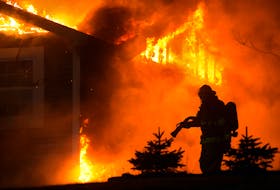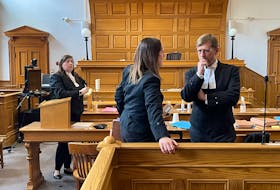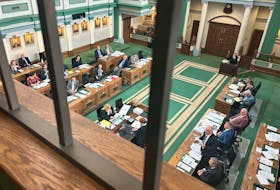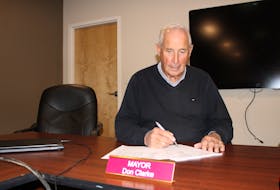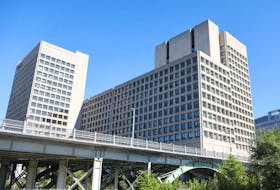They say they will no longer be complicit in what they call the provincial government’s continued delay in protecting natural areas.
That’s why two members of the Wilderness and Ecological Reserves Advisory Council (WERAC) have resigned.
The council formed in 1980 to advise government on the establishment and management of wilderness and ecological reserves in the province. It consists of a wide range of experts who serve three-year appointed terms as volunteers on the committee.
WERAC has helped protect many well-known parts of the province, such as Mistaken Point and Cape St. Mary’s.

By 1995, WERAC had helped to draft a Natural Areas System Plan (NASP), a province-wide system of reserves. For the past 25 years, the province has remained in the process of finalizing the NASP.
“It has been repeatedly stalled,” former WERAC co-chair Victoria Neville wrote on Jan. 24 in her resignation letter to Gerry Byrne, minister of fisheries and land resources.
“There seems to no desire to release this plan publicly or act on preserving the areas outlined.”
On Feb. 21, the longest standing WERAC member, seabird expert Bill Montevecchi, also resigned.
“The most difficult experience has been a long series of failures by responsible ministers to engage the Wilderness and Ecological Reserves Act (WERA) in a credible and proactive manner,” Montevecchi wrote in his resignation letter to Byrne.
“The process has been broken and is not working as it should for the people of Newfoundland and Labrador.”
WERAC timeline
- 1980: Wilderness and Ecological Reserves Act passed by provincial government to create and safeguard areas of the province as wilderness and ecological reserves.
- 1992: Federal and provincial governments agree to complete their protected areas systems by the year 2000.
- 1995: Provincial government begins privatization initiative of provincial parks, privatizing or closing roughly 50 provincial parks or natural areas over the next two years.
- 2007: Term of appointment for all WERAC members expired. The council would not be reinstated for another seven years.
- 2010: Despite an expired membership, WERAC releases report saying repeated requests by council for completion of the appointment process were not addressed by government. Report says minister would only meet with WERAC after appointment process was finalized, thereby minimizing WERAC’s ability to assume its legislated mandate.
- 2011: Mining Industry NL makes recommendation to the province that if an area of land requires protection from mineral exploration, then a corresponding area of protected land be reopened to exploration to avoid further net loss of land available for mining.
- 2015: Mandate letter to Perry Trimper, minister of environment and conservation: “You are expected to finalize and publicly release a Natural Areas System Plan in collaboration with your colleagues.”
- 2017: New WERAC council formed after 2014 terms expire. Council convenes for one in-person meeting in September, then does not hold in-person meetings for 2.5 years.
- 2019: Mandate letter to Gerry Byrne, minister of fisheries and land resources: “Working in collaboration with your colleagues, the Minister of Municipal Affairs and Environment and the Minister of Natural Resources, to continue work on a Natural Areas System Plan.”
- 2020: WERAC says request to meet with Premier Dwight Ball about the NASP not acknowledged.
N.L. falls short on protection targets
Doug Ballam is a former biologist with what was the province’s parks and natural areas division in the 1990s.
He said the 1990s was a time of great public support for protected areas, yet the province didn’t act.
“Not only did we not release the plan (NASP), and not act on it, we actually got rid of 56 protected areas — 56 parks. So, while the whole western world was accelerating, creating more and more of these areas, we were busy getting rid of them.”
The province committed in 1992 to the United Nations Convention on Biological Diversity to expand protected areas to at least 17 per cent of its total land and inland waters by this year. So far, it's reached 6.9 per cent.

“We are lagging behind the rest of the country,” said Suzanne Dooley, conservation director with the Canadian Parks and Wilderness Society of Newfoundland and Labrador.
Dooley said Ontario has protected over 10 per cent of its land and inland waters, and Prince Edward Island announced on Friday that its increasing protections.
“Why are we so behind? It’s frustrating,” she said.
Ask Montevecchi, Neville and Ballam, and they all provide the same reason: mining.
Ballam said when he worked with the province he saw first-hand the stalling tactics that were used to prevent the release of the NASP.
“It was delayed for any excuse at all,” he said.
“At the time, in the ‘90s, the parks agency was basically in tourism — the Department of Tourism. And so, any excuse at all. For example, 1997 was the (Cabot 500 celebrations), so the deputy minister, Robert Thompson, said, ‘Yeah, the focus of the department this year is going to be the Cabot 500, so we’re not going to be doing the plan this year.’ 1999, I think, was come home soiree year, or something. Same thing. So, whatever excuse came up.”
Ballam said mining industry lobby groups have been “extraordinarily successful” in persuading government not to establish protected areas.
“They’ve actually created the attitude in the provincial government that these protected areas are economic negatives.”
Province making progress: Byrne
In an emailed statement to The Telegram on Friday, Byrne thanked Montevecchi and Neville for their service to the WERAC.
“WERAC members have been instrumental in guiding the development of a Natural Areas System Plan to establish a protected areas network in the province. We look forward to continuing this important work with the advice and participation of council members,” reads the email.

Byrne wrote that the province is “continuing to make progress on a draft suite of new provincial protected areas.”
However, Montevecchi said releasing the NASP has “been a futile battle”.
“In the past decade, it’s been compromised more and more, lip service more and more, never a priority, and essentially evaporated.”
Ballam said by the time he left his job with the province in 2000, 40 per cent of the areas suggested for protection in the draft NASP were either changed or deleted.
He said he left a career in conservation because of a lack of progress dealing with the province left him feeling burnt out. He said that’s a common story for people who work in conservation in Newfoundland and Labrador.
“We’re in the 1950s when it comes to attitudes and progress when it comes to conservation. 1950s. What’s it going to take to bring us into the new millennium? I don’t know. I never thought I’d be talking about this in 2020.”
He said history will look back and judge harshly the political parties of this era for not acting on conservation and protected areas.
“They’re also going to look back and judge harshly the Newfoundland and Labrador society because we’re complicit.”
Meanwhile, Montevecchi and Neville hope their resignations put pressure on government.
“It remains to be seen how it will fall out. Sometimes these crises create opportunities, and that’s obviously what we would hope for,” said Montevecchi.
Twitter: @juanitamercer_

